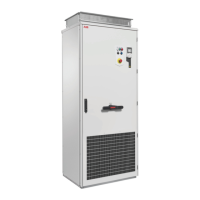NotesWiring method
Free air
2)
• Allowed internally in enclosures when in accordance
with UL.
Enclosures, air handlers, etc.
1)
Metallic conduit may be used as an additional ground path, provided this path is a solid path capable of handling ground
currents.
2)
See 70 (NEC), UL, and local codes for your application.
3)
Non-metallic conduit use underground is allowed; however, these installations inherently have an increased chance for
nuisance problems due to the potential for water/moisture in the conduit. Water/moisture in the conduit increases the
likelihood of VFD faults or warnings. Proper installation is required to ensure there is no intrusion of water/moisture.
Metal conduit
Couple separate parts of a metal conduit together: bridge the joints with a ground conductor
bonded to the conduit on each side of the joint. Also bond the conduits to the drive enclosure
and motor frame. Use separate conduits for input power, motor, brake resistor, and control
wiring.
Note:
Do not run motor wiring from more than one drive in the same conduit.
■ Power cable shield
If the cable shield is used as the sole protective earth (PE) conductor, make sure that its
conductivity agrees with the PE conductor requirements.
To effectively suppress radiated and conducted radio-frequency emissions, the cable shield
conductivity must be at least 1/10 of the phase conductor conductivity. The requirements
are easily met with a copper or aluminum shield. The minimum requirement of the motor
cable shield of the drive is shown below. It consists of a concentric layer of copper wires
with an open helix of copper tape or copper wire. The better and tighter the shield, the lower
the emission level and bearing currents.
Insulation jacket1
Helix of copper tape or copper wire2
Copper wire screen3
Inner insulation4
Cable core5
Selecting the control cables
■ Shielding
Only use shielded control cables.
Guidelines for planning the electrical installation 73

